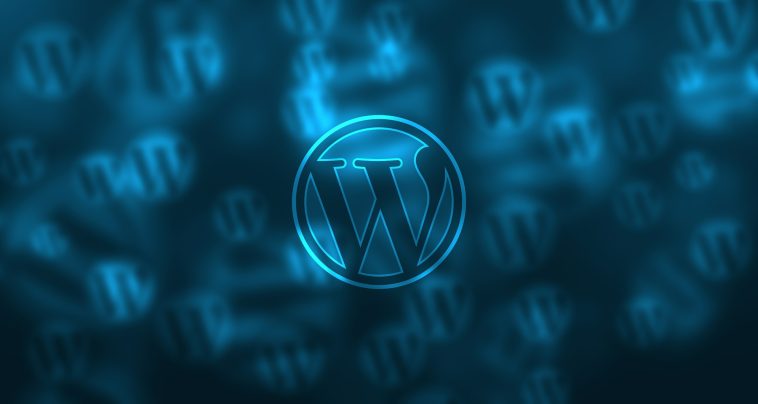Introduction.
I have seen many WordPress users struggle with confusing advice on search engine optimization.
Too many people fall for ideas that promise a quick fix but lead to wasted time and lost opportunities.
I want to share what I have learned from years of experience and trusted sources. By busting these myths, I hope to help you build a solid, long-lasting foundation for your site.
Why WordPress SEO Matters
SEO helps your site rank higher in search results so more people can find it. I learned early on that a well-optimized site not only attracts visitors but also builds trust and credibility.
For example, a study by BrightEdge shows that organic search drives over 50% of website traffic. This means that if your site isn’t ranking well, you might be missing out on a huge number of potential visitors and customers.
I also noticed that a well-optimized site makes life easier for visitors. A fast, easy-to-navigate site helps people find the information they need quickly.
This boosts user satisfaction, and search engines like Google reward sites that offer a great experience. A clean design, clear navigation, and fast load times all play a role in improving your SEO performance.
Busting the Myths
Over the years, I have encountered many common myths about WordPress SEO. Here are a few of the ones that I have seen create the most confusion:
Myth #1: More Keywords Always Help
A common belief is that stuffing your content with as many keywords as possible will boost your ranking.
I found out that this old-school trick does more harm than good. Search engines today are smart enough to understand context.
Instead of repeating a word over and over, I now focus on using a few well-chosen keywords naturally throughout my content.
For instance, if I’m writing about “healthy recipes,” I include related terms like “nutrition,” “meal prep,” and “balanced diets.”
This approach not only makes my writing flow better but also helps search engines understand my content. Quality and clarity win over quantity every time.
Myth #2: SEO is a One-Time Setup
When I first started, I thought that installing a plugin like Yoast SEO would be a magic solution. I soon learned that SEO is much like a garden—it needs ongoing care.
Once your site is up and running, you must continue to nurture it. Search engines update their algorithms regularly, and your competitors are constantly improving their sites.
I make it a habit to update my content, check my site’s performance with tools like Google Search Console, and adjust my strategies based on the latest trends. Treating SEO as a one-and-done deal can hurt your long-term success.
Myth #3: More Plugins Mean Better SEO
Some users believe that installing multiple SEO plugins will give them an extra edge. My experience shows that too many plugins can slow down your site and create conflicts.
Instead of adding extra tools, I choose one reliable plugin—like Yoast SEO—and stick with it. A single well-maintained plugin covers most of the bases without bogging down the site’s speed.
I always keep my plugins updated and remove any that are unnecessary. This not only helps with performance but also improves security and user experience.
Myth #4: SEO and Design Don’t Mix
There is a misconception that SEO is all about keywords and backlinks, while design is purely aesthetic. I
learned that good design and strong SEO are intertwined. A site that is visually appealing, easy to navigate, and mobile-friendly sends positive signals to search engines.
Visitors who have a good experience tend to stay longer and explore more pages, which boosts your ranking.
When I update my site, I focus on a clean design that is both attractive and functional. Simple navigation menus, readable fonts, and a responsive layout help create an environment that search engines find favourable.
Myth #5: Great Content Does It All
I love writing useful, engaging content, but I discovered that great content alone might not get noticed if it isn’t properly optimized. Even the best articles need a little extra help from on-page SEO tactics.
This includes using the right headings, crafting meta descriptions, and creating internal links to guide readers through my site.
It turns out that quality content and good technical SEO work together. Think of it like a delicious meal that also needs good presentation. Both elements are important to attract and retain readers.
Best Practices for Real SEO Success
Over time, I have developed a few strategies that work well for my WordPress site. Here are some of the practical steps I follow:
- Choose a Reliable SEO Plugin: I use Yoast SEO for guidance on optimizing each post. This plugin helps me with everything from keyword focus to meta descriptions.
- Optimize Your Images: I make sure to compress images before uploading them and always add alt tags that describe the image. This not only improves SEO but also makes the site accessible.
- Use Clean URLs: Instead of long, confusing links, I use short and descriptive URLs that include the main keyword. Simple URLs are easier for both users and search engines to understand.
- Focus on Mobile Optimization: Since many people browse on mobile devices, I always check how my site looks on phones and tablets. A mobile-friendly site is essential, as Google favors mobile-optimized sites.
- Keep Content Fresh: I review and update older posts with the latest information. This practice keeps my content relevant and signals to search engines that my site is active.
- Monitor Site Speed: I use tools like Google PageSpeed Insights to find ways to make my site load faster. A fast site improves user experience and boosts your SEO ranking.
- Build Quality Backlinks: I focus on creating content that others naturally want to share. Backlinks from reputable sites boost my site’s authority and help improve rankings.
- Write Naturally: I avoid technical language and speak as if I’m talking with a friend. Clear, simple writing helps both readers and search engines understand my message.
Extra Tips I Follow
I believe that sticking to a consistent strategy is key. In addition to the points above, I also:
- Audit My Site Regularly: I use tools like Screaming Frog to check for broken links or outdated content. Keeping everything in check is essential for long-term success.
- Use Structured Data: Adding schema markup helps search engines better understand my content. This extra detail can lead to rich snippets in search results.
- Plan a Content Calendar: Scheduling my posts in advance keeps my site updated and ensures a steady flow of new content. A regular posting schedule is great for building an audience.
- Focus on Local SEO: For sites with a local focus, I optimize for local search terms and maintain an updated Google My Business profile. This can be especially helpful for small businesses.
- Engage with My Audience: I pay attention to comments, social media interactions, and email feedback. Engaging with readers not only builds a community but also shows search engines that my site is active.
SEO Tools I Rely On
I trust several tools to help me track and improve my site’s performance:
- Google Analytics: This tool provides insight into how visitors interact with my site. I can see which pages do well and which might need improvement. Visit Google Analytics.
- Google Search Console: This free tool helps me monitor my site’s health and troubleshoot any issues. Check it out at Google Search Console.
- Yoast SEO: My go-to plugin for on-page optimization. It gives me clear feedback on how to improve each post. Learn more at Yoast SEO.
- Moz: I often use Moz’s tools and resources for building backlinks and learning new strategies. Their Beginner’s Guide to SEO is a great place to start.
These tools work together to provide a complete picture of my site’s SEO health. They help me see what’s working and where I might need to adjust my approach.
FAQs
Do I need to hire an SEO expert for my WordPress site?
Not always. If you take the time to learn and use the right tools, you can handle most aspects of SEO yourself.
I built up my skills gradually by starting with the basics. For advanced strategies, consulting an expert can be useful.
Can free SEO plugins do the job?
Yes, many free plugins work well. I started with free versions of Yoast SEO and All in One SEO Pack, and they have served me well. Upgrading is an option only if you need extra features.
How long does it take to see results from SEO efforts?
SEO is a gradual process. I usually see noticeable improvements within a few months, though full results might take six months to a year. This depends on factors like competition and how often I update my content.
How often should I update my content?
I usually update my content every few months. For fast-changing topics, more frequent updates are necessary. For evergreen topics, a review every six months is often enough.
Does social media affect SEO?
Social media can indirectly impact SEO. When my content is shared widely, it drives traffic and engagement, which in turn can boost my rankings. I make sure to share my posts on platforms like Twitter and Facebook.
Further Resources
For anyone looking to learn more about WordPress SEO, here are some additional resources that I find helpful:
- WordPress SEO by Yoast
- Google’s SEO Starter Guide
- Moz Beginner’s Guide to SEO
- HubSpot’s SEO Blog
- WordPress Subreddit
These links provide up-to-date tips, in-depth guides, and real-life examples from people who are also working on improving their SEO.
Conclusion
I trust that you now have a clearer view of what works and what doesn’t when it comes to WordPress SEO. My journey taught me that small, consistent changes can have a big impact over time.
By combining quality content with simple technical tweaks, you can help your site climb the search results and build a strong online presence.
I’m excited to see how these insights help you improve your site, and I invite you to share your thoughts. What new strategy will you try first on your site?





GIPHY App Key not set. Please check settings